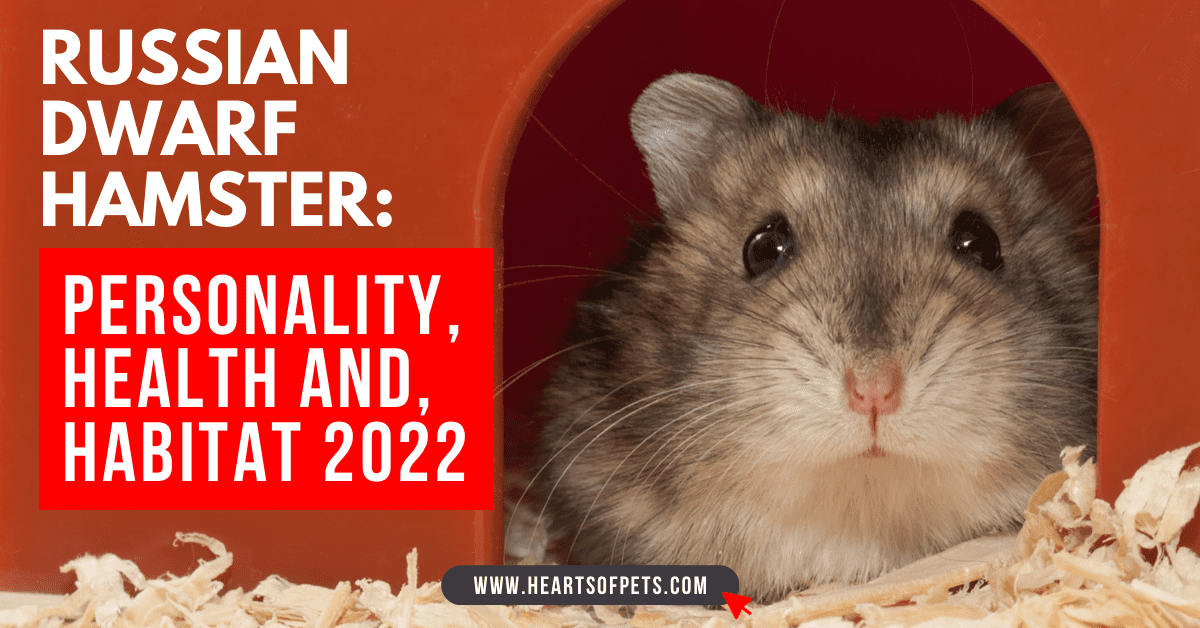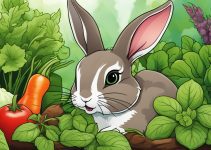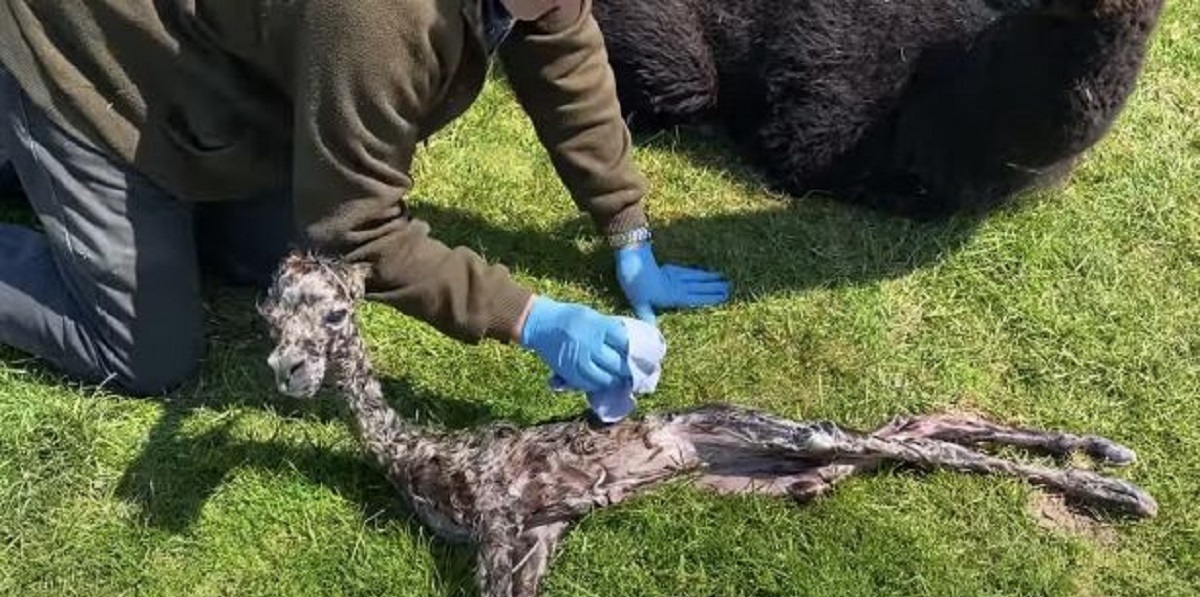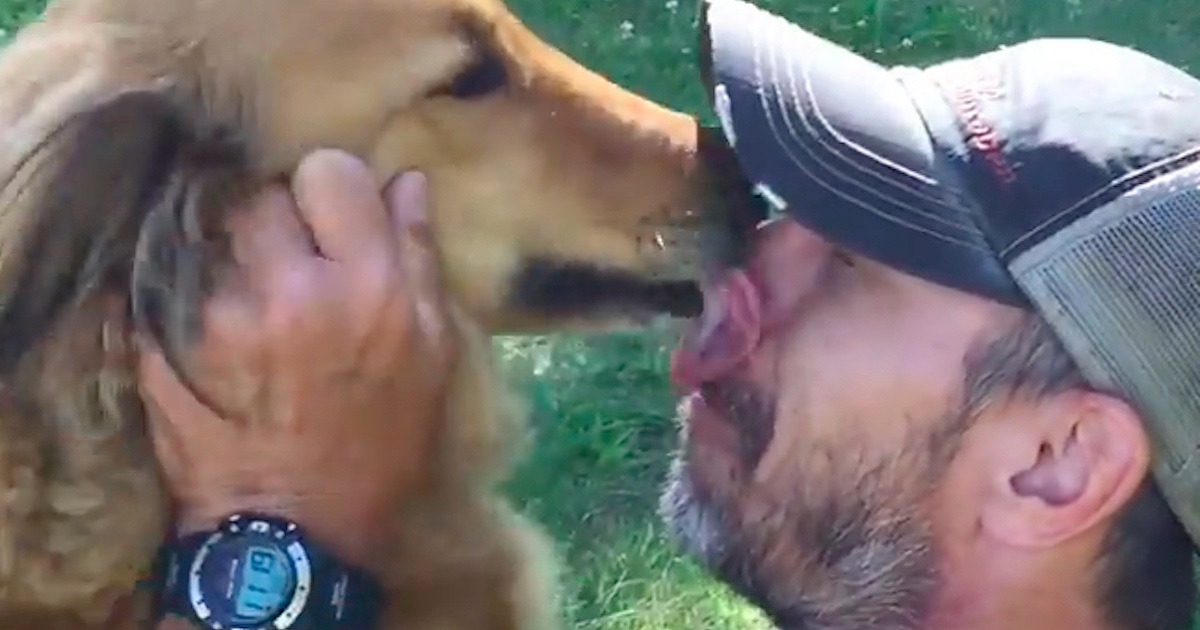Are you a proud owner of a sugar glider or considering bringing one home as a pet? One of the most important aspects of caring for these adorable creatures is understanding their dietary needs. Providing a balanced and nutritious diet is essential for their overall health and well-being.
Sugar gliders have a varied and omnivorous diet, which means they eat both plant and animal-based foods. The key to a healthy sugar glider diet is offering a combination of different food groups to ensure they receive all the necessary nutrients. Let’s take a closer look at what sugar gliders eat:
What Do Sugar Gliders Eat?
- Sugar gliders have an omnivorous diet that includes a variety of kibble, fresh fruits and vegetables, protein, and flavored Greek yogurt.
- It is important to provide a wide variety of produce and ensure they consume the recommended amount of kibble.
- Avoid feeding sugar gliders onions, garlic, chocolate, dairy products, and canned fruits.
- Sugar gliders in the wild eat a diverse range of natural food sources, including sap, nectar, insects, and spiders.
- Consulting with a veterinarian experienced in sugar glider care can help ensure the optimal diet for these unique creatures.
Sugar Glider Diet Recommendations
Sugar gliders have specific dietary needs to ensure their health and well-being. Providing a balanced and nutritious diet is key to their overall development and longevity. Let’s explore the best foods for Sugar Gliders, feeding tips, and important considerations for their nutrition.
Recommended Diet Composition
The ideal sugar glider diet consists of approximately 15-20% of their body weight. It should be a combination of nutritionally balanced pelleted kibble, a nectar/sap-based mixture, a small number of insects, a calcium-based multivitamin, and a variety of fresh vegetables and fruits.
- Nutritionally balanced pelleted kibble: This should serve as the staple food and make up the majority of their diet. It provides essential nutrients and helps maintain their dental health.
- Nectar/sap-based mixture: Sugar gliders naturally consume nectar and sap in the wild, so offering a similar mixture can be beneficial to their overall nutrition. It can be prepared using honey, baby food, or specialized nectar supplements.
- Insects: A small number of insects can be included in their diet to supplement their protein intake. Offer live or dried insects like mealworms or crickets, but ensure they are sourced from reputable suppliers.
- Calcium-based multivitamin: Sugar gliders have specific calcium requirements, and a calcium-based multivitamin should be added to their diet to prevent deficiencies. Consult with a veterinarian to determine the appropriate brand and dosage for your glider.
- Fresh vegetables and fruits: While fruits can be a part of their diet, they should only make up a small portion to prevent gliders from preferring fruits over a balanced diet. Offer a wide variety of fresh vegetables and fruits to provide essential vitamins and minerals. Always opt for fresh and organic options to avoid exposing your glider to harmful toxins and preservatives.
Note: It’s important to avoid certain foods high in oxalates as they impair calcium absorption. Never feed chocolate, dairy products, or canned fruits to your sugar gliders as they can be harmful to their health.
By following these sugar glider diet recommendations, you can provide a balanced and nutritious eating plan for your furry friends. Remember, their diet is critical in supporting their overall health, so it’s always advisable to consult with a veterinarian experienced in sugar glider care to ensure their specific nutritional needs are met.
Sugar Gliders’ Natural Diet in the Wild
In the wild, sugar gliders are opportunistic omnivores, meaning they eat a variety of food items based on what is available to them. Their natural diet consists of:
-
Sap and gum from eucalyptus and acacia trees
-
Pollen and nectar
-
Manna and honeydew
-
Various insects and spiders
Sugar gliders’ diet in the wild is influenced by the changing seasons. They adapt their eating habits to the different food sources available throughout the year.
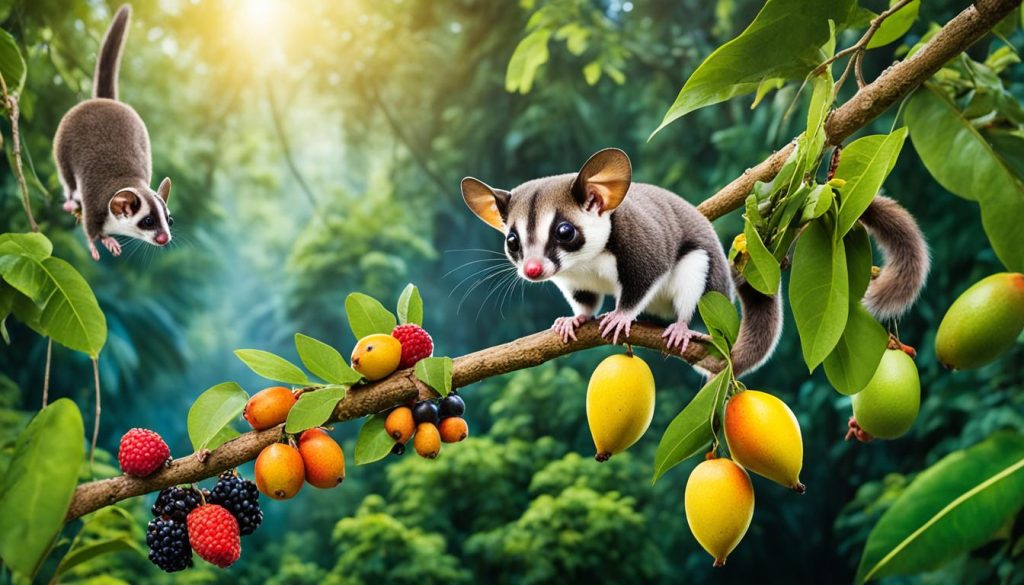
Veterinarian-Recommended Diet: Alea’s Happy Glider Diet Plan
Alea’s Happy Glider Diet Plan is a veterinarian-recommended diet that combines the stability of kibble with the variety and flexibility of fresh produce. This carefully crafted diet ensures that your sugar gliders receive the necessary nutrients for their overall health and well-being.
The foundation of Alea’s Happy Glider Diet Plan is the Happy Glider kibble. It is recommended to feed 2 tablespoons of this nutritionally balanced kibble per glider per night. The kibble provides a stable base that meets their nutritional requirements.
In addition to the kibble, the diet plan includes 0.5 to 1 tablespoon of fresh fruit or vegetable choices. This ensures the gliders have access to the essential vitamins and minerals found in a variety of produce. Some recommended options include green beans, carrots, peas, kiwi, apple, tomato, citrus, spinach, and bell pepper. By offering a range of fruits and vegetables, you can provide a diverse diet that mimics their natural feeding habits.
To add a touch of variety and enjoyment to their meals, Alea’s Happy Glider Diet Plan suggests incorporating flavored Greek yogurt once a week. This delicious treat not only provides additional nutrients but also enhances the overall dining experience for your gliders.
Furthermore, protein sources are recommended a couple of times a month. Cooked egg or ground turkey are excellent options that offer a boost of protein to support their growth and development.
Finally, hydration is essential for sugar gliders. Alea’s Happy Glider Diet Plan emphasizes the importance of having two sources of fresh, filtered water per cage. This ensures that your gliders always have access to clean water, promoting optimal hydration and overall health.
By following Alea’s Happy Glider Diet Plan, you can provide your sugar gliders with a well-rounded and nutritionally balanced diet. Consult with your veterinarian to ensure you are meeting the specific dietary needs of your gliders and promoting their overall well-being.
Homemade Diet: BML Diet
The BML Diet is a popular homemade diet for sugar gliders. This diet is a great way to provide your sugar gliders with a balanced and nutritious meal. It consists of specific fruits, vegetables, and other ingredients that can be easily found in most pet stores and grocery stores. By following the BML Diet, you can ensure that your sugar gliders are receiving the essential nutrients they need for a healthy lifestyle.
One of the advantages of the BML Diet is its flexibility. There are two versions of this diet – the homemade version and the kibble version. The homemade version requires you to purchase the necessary ingredients and prepare the meal yourself. This allows you to have more control over the quality and freshness of the food you are providing to your sugar gliders.
The kibble version of the BML Diet involves using commercially available kibble as the main component of the diet. This is a convenient option for those who prefer a ready-to-use diet plan. Both versions of the BML Diet have been found to be suitable for sugar gliders and provide a balanced nutritional profile.
When following the BML Diet, it is important to ensure that you are feeding your sugar gliders the recommended portions and maintaining a consistent feeding schedule. This will help them establish a healthy eating routine and prevent any potential digestive issues. Additionally, always provide fresh, filtered water to keep your sugar gliders hydrated.
To give you an idea of what the BML Diet entails, here is a simple list of some of the fruits and vegetables commonly included:
- Mango
- Papaya
- Sweet potato
- Carrots
- Leafy greens
- Apples
Remember to consult with a veterinarian experienced in sugar glider care to ensure the BML Diet is suitable for your specific sugar gliders and to address any concerns or questions you may have.
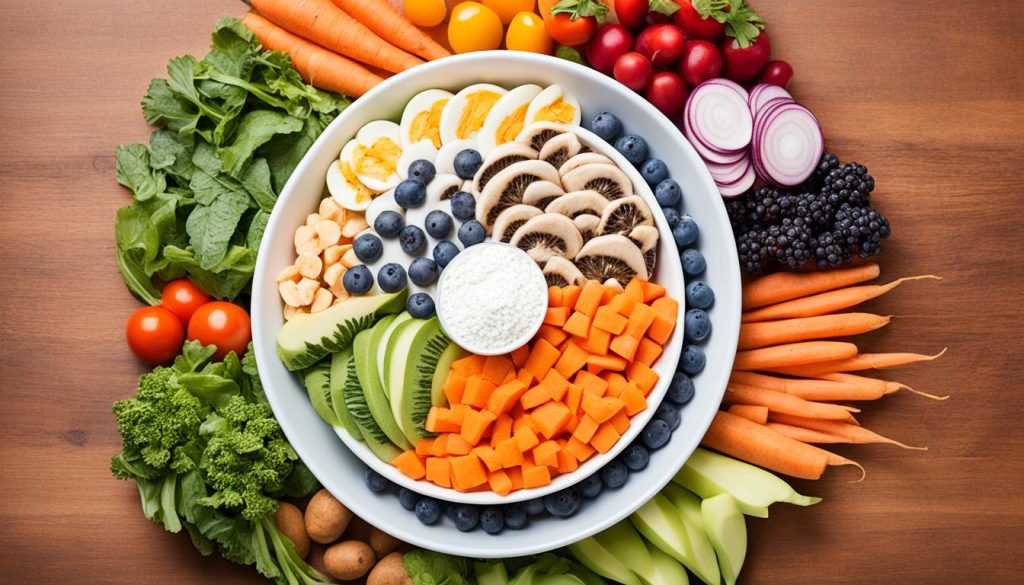
Purchased Diet: Critter Love Complete and Critter Love Plus
When it comes to providing a balanced and nutritious diet for your sugar gliders, Critter Love has you covered. They offer two diet plans specifically formulated for sugar gliders – Critter Love Complete and Critter Love Plus. These purchased diets are designed to meet the nutritional needs of sugar gliders and can be conveniently mixed at home.
Both Critter Love Complete and Critter Love Plus come with additional ingredients and salads to enhance the variety and nutrition of your gliders’ meals. These diets are carefully crafted to provide the necessary nutrients for optimal health and well-being.
If you’re looking for a hassle-free way to ensure your sugar gliders’ dietary needs are met, Critter Love Complete and Critter Love Plus are excellent choices. You can purchase these diet plans directly from the Critter Love website, making it convenient and accessible for glider owners.
By opting for the Critter Love diet plans, you can have peace of mind knowing that your sugar gliders are getting the nutrition they need. These purchased diets provide a convenient solution that takes the guesswork out of creating a well-balanced diet for your furry companions.
Wild Diet vs. Captive Diet
When it comes to the diet of sugar gliders, there are significant differences between their wild and captive counterparts. In the wild, sugar gliders have the freedom to forage and consume a diverse array of natural food sources. Their diet consists of various fruits, insects, sap, pollen, and more, depending on seasonal availability. This diet is rich in nutrients and fulfills their dietary needs in their natural habitat.
On the other hand, captive sugar gliders rely on their owners for their nutrition. As responsible pet owners, we must provide a carefully balanced diet that mimics their wild diet as much as possible. This ensures that captive sugar gliders receive the necessary nutrients and avoid any health issues that may arise from an inadequate diet.
The primary difference between the two diets is the availability and variety of food sources. While sugar gliders in the wild have access to a wide range of natural foods, captive sugar gliders are dependent on the choices made by their owners for their daily sustenance. Therefore, it becomes crucial for us to recreate a diet that closely resembles what they would eat in the wild.
To achieve this, a balanced diet for captive sugar gliders usually consists of commercially available pelleted kibble, fresh fruits and vegetables, protein sources, and supplements. By incorporating these components into their daily meals, we can ensure that their dietary requirements are met. However, it’s important to note that finding the perfect balance may require some trial and error, as every sugar glider has unique preferences and dietary needs.
Providing a well-rounded diet for captive sugar gliders not only promotes their overall health but also helps in preventing nutritional deficiencies and disorders that can arise from an inadequate diet. Consulting with a veterinarian experienced in sugar glider care can provide valuable guidance and ensure that we are on the right track with our gliders’ dietary needs.
- Wild sugar gliders have a varied diet that includes a range of natural food sources.
- Captive sugar gliders require a carefully balanced diet that resembles their wild diet.
- The main difference between the two diets is the availability and variety of food sources.
- Owners must provide a well-rounded diet to meet the nutritional needs of captive sugar gliders.
- Consulting with a veterinarian experienced in sugar glider care is recommended.
Conclusion
Providing a balanced and varied diet is crucial for the health and well-being of sugar gliders. By offering different diet options such as Alea’s Happy Glider Diet, BML Diet, Critter Love Complete, and Critter Love Plus, owners can ensure that their sugar gliders meet their unique nutritional needs. It is essential to understand the specific dietary requirements of sugar gliders, including the right proportion of kibble, fresh produce, protein, and other supplements.
Consulting with a veterinarian experienced in sugar glider care can help determine the optimal diet for these adorable creatures. They can offer valuable advice and guidance on nutrition, ensuring that sugar gliders receive the right balance of nutrients to thrive. A well-thought-out diet plan can help prevent nutritional deficiencies or disorders and support the overall health of sugar gliders, promoting their active and happy lives.
Remember, a diet that closely approximates what sugar gliders consume in the wild is the key to their well-being. So, whether you choose to follow a purchased diet like Critter Love Complete and Critter Love Plus, or a homemade diet like the BML Diet, it’s important to prioritize their nutritional needs. By providing a thoughtful and carefully planned diet, you can ensure that your sugar gliders enjoy a long and healthy life in captivity.

